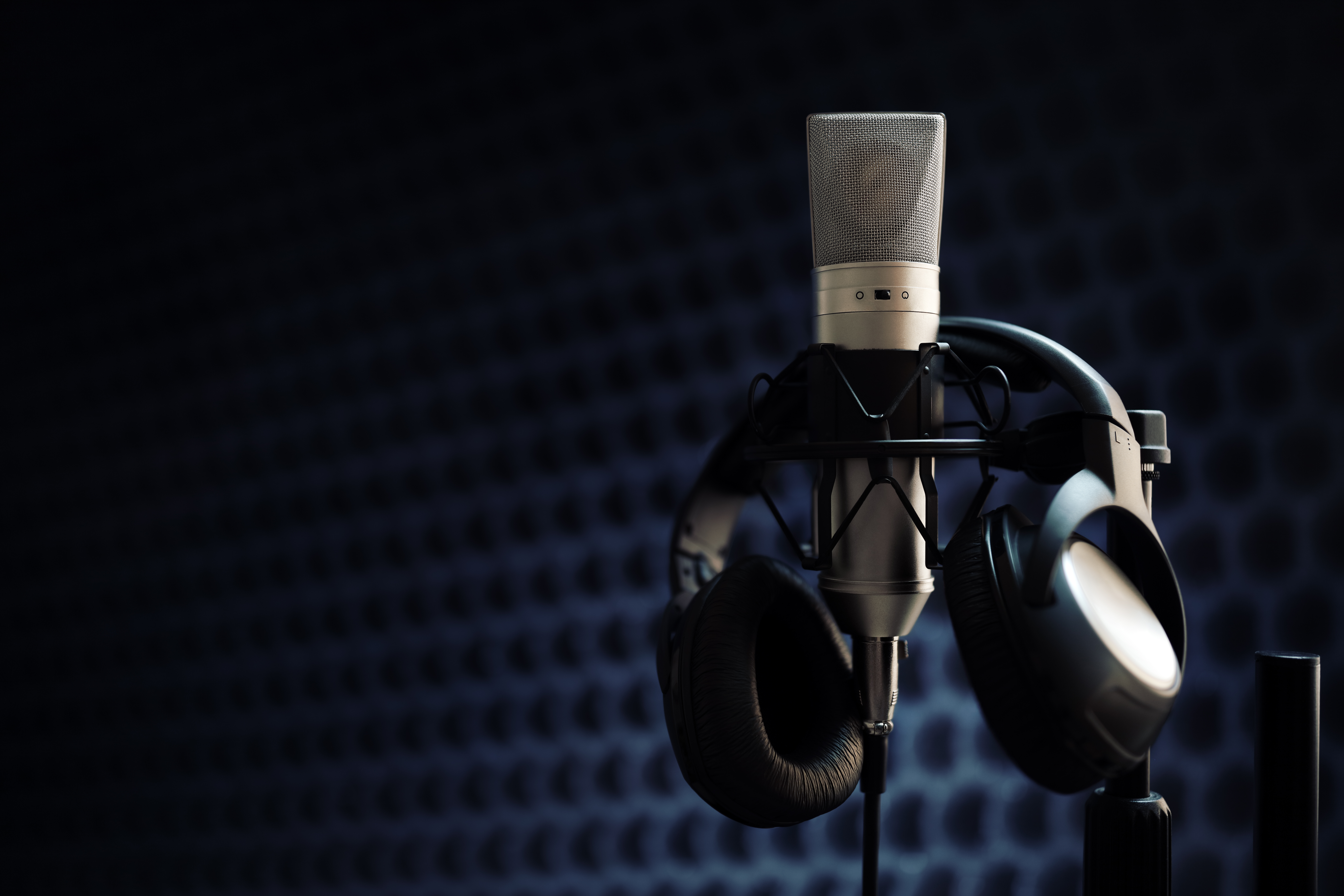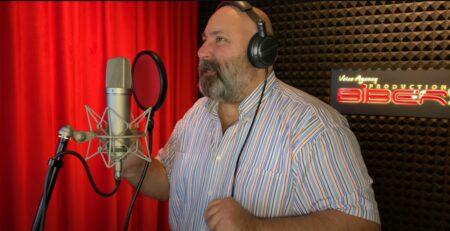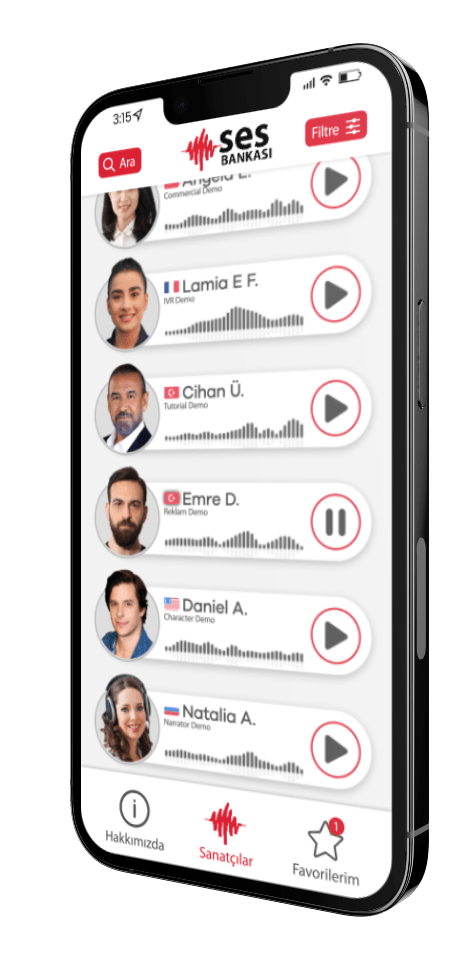Voiceover Art Performers: Voiceover Art and Voiceover Artists
In short, dubbing and dubbing means giving life to any written text, poem, novel, article, news or character with sound. The person who performs the art of dubbing and dubbing is called a dubbing and dubbing artist. While addressing the subject, it may be useful to distinguish between "Voiceover Art Performer" and "Dubbing Art Performer". Because dubbing and dubbing actually differ from each other, although they have common features.
So what is the art of voiceover? Why do we need to call voice acting art?
What is Voice Art and Dubbing Art?
In dubbing and voice-over, the work of the artists is known as speaking to an image, and for this reason, although they seem to be the same, they actually differ from each other. This difference is differentiated according to the project content they will talk about.
Voice Art; Also known as off-camera or off-stage commentary. It is a production technique in which a voice is used in radio, television production, film production, theater without a character equivalent. If we give an example of the voice-over works that we are exposed to in many moments of our lives today, we can first talk about advertisements in audio and visual broadcasting channels. Voices that make campaign announcements or inform their customers about innovations by reading the texts of the advertisements about the brand, product or service that are the subject of the advertisements. In these advertisements, the speaker does not have any character equivalents, only their voices are heard. Or station announcements made in subways and switchboard announcements used in customer services are also good examples of voice-over works that are constantly in our lives.
Dubbing; It is the technique of speaking the local language again for the characters that have been spoken in another language before, or the technique of giving a voice to a character that is sometimes voiced in Turkish but not liked. While dubbing is not possible in foreign productions due to the language difference, it is very important to keep the lip synchronization while dubbing in Turkish.
If we talk about the other differences apart from these; While theatrical abilities come to the fore in dubbing, in order to perform the play of the character on the screen exactly, theatricality, correct intonation and emphasis, characteristic sounds should be at the forefront as a whole. Because it is not easy to make the listener feel the emotion of the text without any image or sound. For this reason, while only voice actors can do the dubbing, both dubbing artists and voice actors can easily do it. And for exactly these reasons, voice over is an art, so are the people who do the voiceover work. is a voice actor.
Which is the First Turkish Movie Voiced in Turkey?
The first Turkish movie to be voiced in Turkey, "", shot by Muhsin Ertuğrul in 1960.A Nation Awakens” is the movie. Turkey is a country that has been successful in dubbing and dubbing in the world. It has countless artists who have proven their talents in dubbing and dubbing and perform this work in the best way. In particular, we have voice-over and dubbing artists who give their voices to world-famous stars who play in many TV series and movies, whose voices are almost identical with them, and whose voices we know and know very well.
With the increase in the number of series, films, documentaries and animations in recent years, the number of candidates who want to perform the art of dubbing and dubbing has increased in Turkey. With various courses and private lessons, an incredible number of willing individuals are being trained in this sector and their number is increasing day by day. However, in order to perform the art of dubbing and dubbing in the best way, to prove himself in the sector, to be a preferred and sought-after voice, it is necessary to work hard and develop. It is very important to constantly read, research, do voice and breathing exercises, and practice a lot.
Candidates who want to be a voice and dubbing artist should know that they have a long road ahead of them, they will work hard and they will get tired, and they should start this way. In short, Voice Over and Dubbing means giving life to any written text, poem, novel, article, news or character with sound. The person referred to as Voice Over and Dubbing Art Performance is the person who gives life with his voice. He is the person who performs the art of dubbing and dubbing with his voice in the best way. While addressing the subject, it may be useful to distinguish between Voice Art Performer and Dubbing Art Performer. Although it is understood as the same, the voice-over and dubbing Although they have common features, they differ from each other.
For Which Projects Is Voice Art Suitable?
When it comes to voice over, promotional film, news, documentary, dialogue texts, advertisement, written texts, books, etc. It comes to mind to give voice to all kinds of written and visual texts. All comments here belong to the vocal artist. Dubbing can be explained easily as follows. It is "Dubbing" in visual broadcasts with certain characters such as movies, TV series, animations and on these previously voiced characters in the same or different language. Dubbing Art Performer takes on that character and plays that character with his voice. It is possible to specialize in Voice and Dubbing Art separately, as well as to perform both. Voice Over and Dubbing Art Performers can work independently of any institution, or they can work under a dubbing and dubbing agency. In order to be a voice and dubbing artist and to be able to do this job in the best way, it is necessary to have certain trainings.
Voiceover art can be used in many different projects:
- Advertising and Promotional Films: The art of voice acting is used in commercials and promotional films to be broadcast on television, radio or digital platforms. Sound, which is used effectively in the promotion of the product or service, helps strengthen the image of the brand.
- Animation and Cartoons: The art of voice acting is used to voice the characters in animation and cartoons. Professional voice actors are preferred to add vitality to the characters, strengthen the narrative of the story, and enable the audience to establish an emotional connection.
- E-Learning and Training Contents: The voice-over used in e-learning platforms or training videos ensures that the content is conveyed clearly and effectively. Voiceover art is preferred to communicate information clearly, capture students' attention, and enhance the learning experience.
- Audiobooks and Podcasts: The art of voice acting plays an important role in audiobooks and podcasts. Professional voice actors are used to animate the texts and convey the characters and story to the audience. The intonation, emphasis and emotional transfer of the voice are important to connect the listener to the content.
- Documentaries and Documentaries: The voice-over, which is used as the voice of the narrator in the documentary, supports the narration of the story. Information transfer, emotional highlights and correct intonation increase the effectiveness of documentaries.
- Audio Guides and Audio Markups: Audio guides and audio markings used in museums, tourist attractions, or other venues use the art of voiceover to provide information to visitors. A good voiceover helps visitors have a better experience.
DictionIt would be appropriate to have training on correct breathing, intonation, and voice use. However, as in every profession, voice-over and dubbing performers must continue their development. They can complete themselves by taking regular singing lessons so that their use of voice can be healthy and correct, and by taking theater training for the development of correct intonation and role skills. A voice-over and dubbing artist pays great attention to voice and body health. He does regular voice, breathing and reading exercises just like a professional athlete.






















